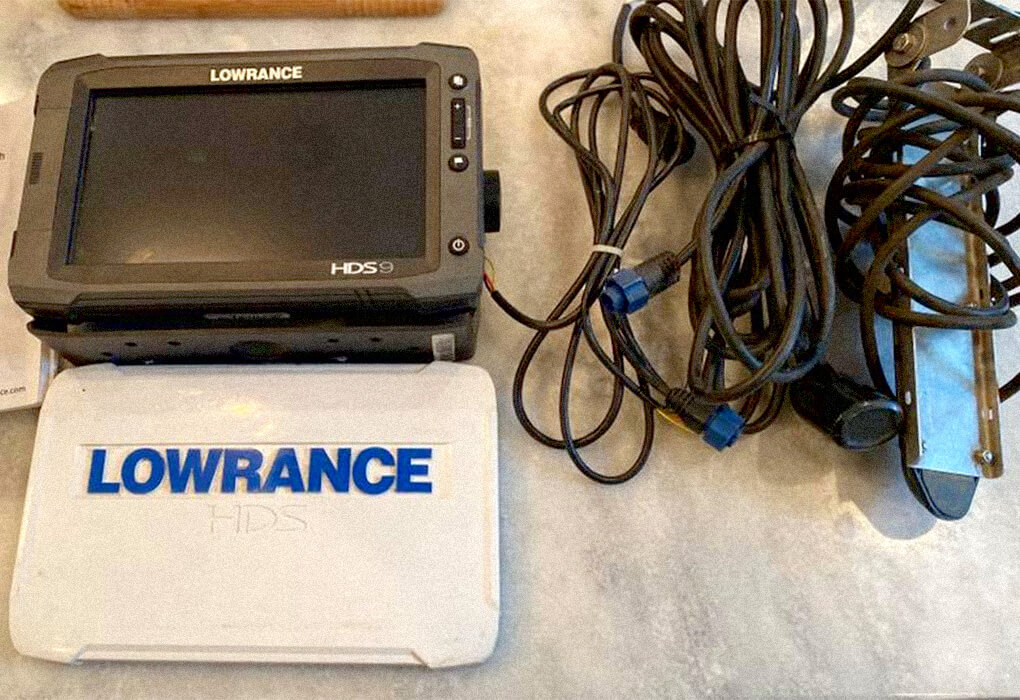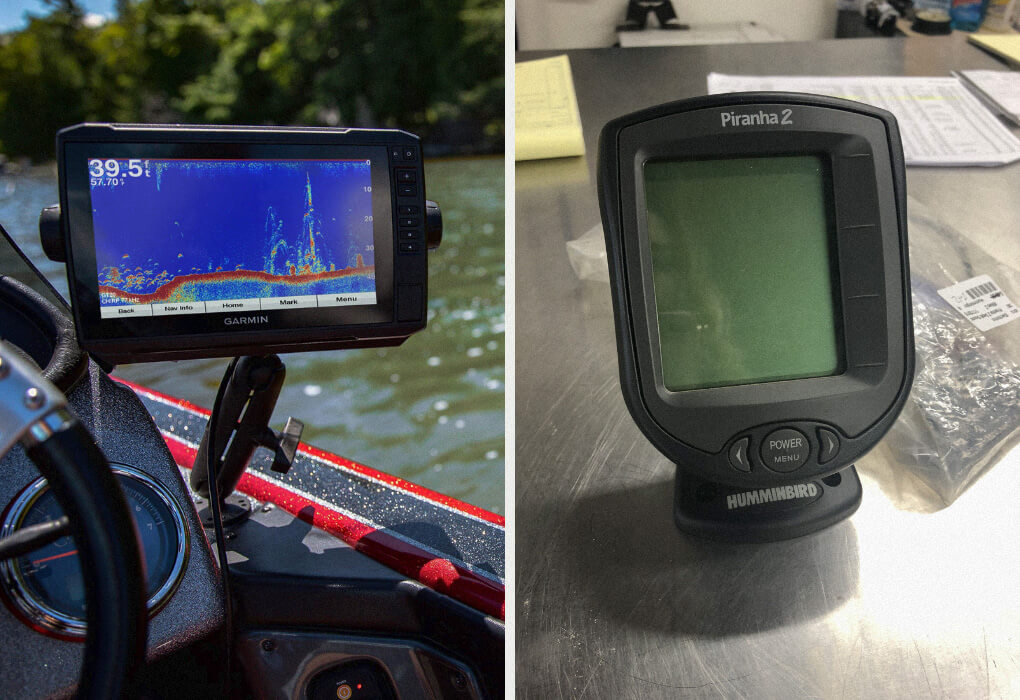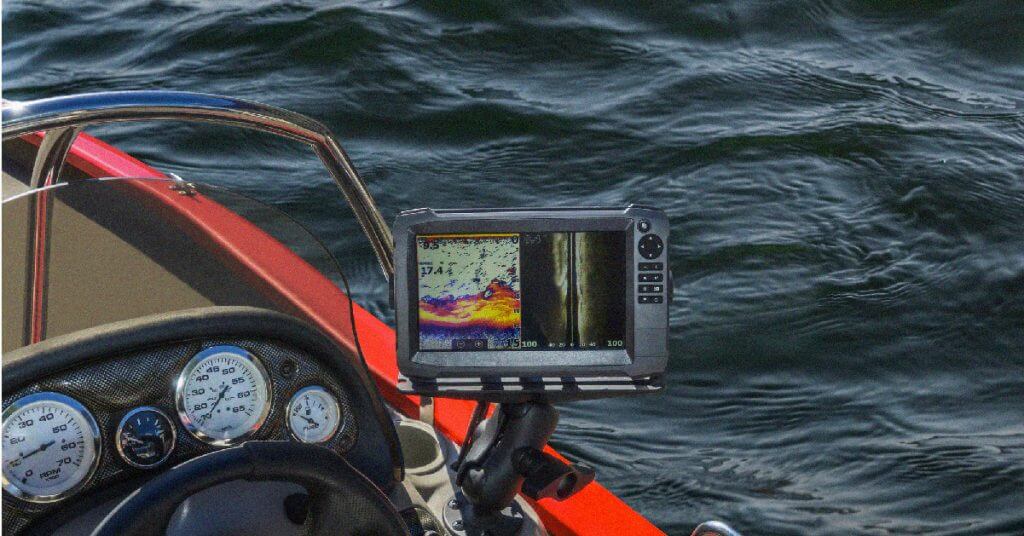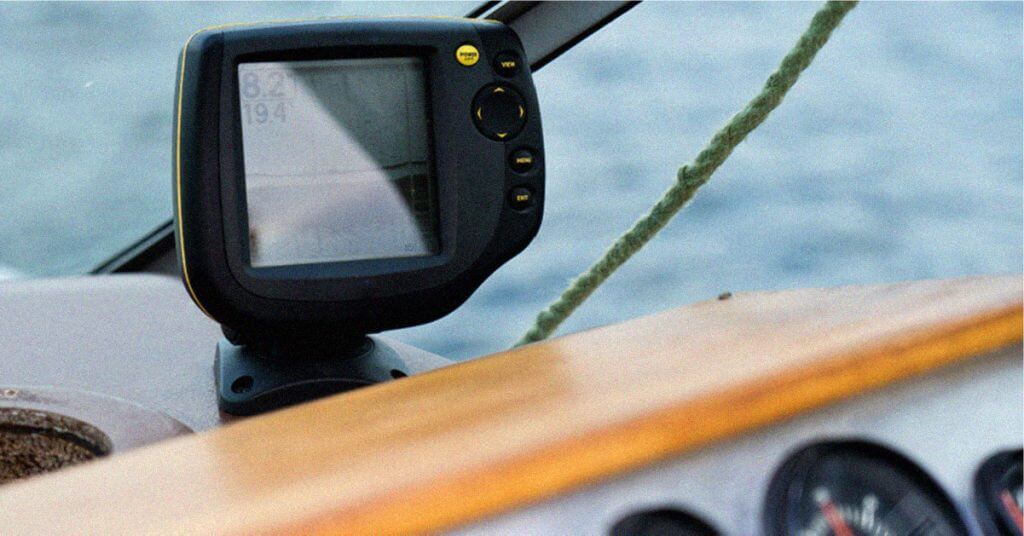For serious anglers, fish finders are almost a necessity. While you can fish without them, there are several cases where they can make your life much better.
This device was first invented in Japan by two brothers who owned a small marine electrical company.
Originally, the fish finder wasn’t actually meant to detect the fish. Instead, it was made to bounce off the bubbles made by the fish.
However, as technology developed, fish finders were eventually able to detect the actual fish. These devices may seem a bit magical, but they actually work on some very basic science. Lets take a look at how a fish finder works.
Table of Contents
What is a Fish Finder?
A fish finder is an electrical device that helps detect fish schools under the surface. Often, these devices also provide information about the ground floor, such as the water depth and the condition of the seabed.
However, these fish finders vary a lot in functionality. Some have many more features than others.
The general idea is that a fish finder finds fish. All types of fish fall into this category, including bait fish. Understanding how to read a fishfinder may help you determine the type of fish you’re looking at.
The fish finder does this via echolocation. Basically, the fish finder sends out a sound wave down below.
Then, the device measures the time it takes for the sound wave to come back. Using this information, the fish finder can find blimps that indicate a school of fish.
Today, tons of different companies make fish finders, from Garmin to Humminbird. Different companies will have slightly different features, though many do make several different fish finders.
Lowrance is quite popular, but they work best in specific situations.
For instance, Lowrance fish finders are best for cold and icy areas. They’re one of the few companies that designs fish finders explicitly for ice fishing.
Other fish finders may work best in freshwater, while some are made to be used in the ocean. The best fish finder for you will depend on your specific situation.

What is a Transducer?
A transducer changes one form of energy into another. Transducers are used in all sorts of different electronics. For instance, you’ll find one in microphones, loudspeakers, and thermometers.
Transducers are also utilized in fish finders. In these devices, a transducer is used to change electrical pulses into sound waves and back again.
All fish finders must have a transducer. Otherwise, the device won’t be able to send out or receive sonar waves (and therefore, not be able to find any fish).
However, the quality of the transducer matters. If a transducer is low-quality, a lot of the information may be lost.
The transducer will be mounted on the boat where it can send out a signal. Then, the transducer receives the signal back and sends it to the fish finder console, where the information is displayed.
Types of Fish Finders
There are many different types of fish finders. These vary in price and function. While they all work similarly, their effectiveness varies greatly. Here are the most common types of fish finders:
- 2D Sonar: This is the oldest type of fish finder. It simply shoots a cone of sonar down below it, penetrating the water deeply. However, it has a low resolution and takes some skill to read.
- Down-imaging: This type is very similar to the 2D sonar. However, the sonar stays very concentrated instead of forming a cone. Often, they are used in narrow sections of water. This is also referred to as “down-scan.”
- Side-imaging: As the name suggests, this fish finder sends sonar along the side – not straight down. Because of this setup, a lot of water can be covered at once.
However, it doesn’t go as deep as others. This type is very different from down-imaging. - CHIRP sonar: Technically, the CHIRP sonar isn’t a fish finder. But they are often categorized that way. CHIRP sonar utilizes many different wavelengths at a time, making it more accurate.
The high-frequency sonar is able to cut through the clutter. You can often adjust the kHz to fit your situation. - Live sonar: The live sonar is one of the newest options on the market (and the most expensive). This sonar updates in real-time, which makes finding fish easier. However, they aren’t great for scanning large areas.
- 360-imaging: Simply put, this sonar device scans as much of the water as possible. It has a transducer that rotates 360-degrees, allowing it to see just about everything.
- 3D fish finder: This fish finder combines data from the side-imaging system and turns it into a 3D image. Therefore, you get a very good view of where the fish and structures are.
- Ice fishing flasher: As you might expect, ice fishing flasher is designed for vertical fishing. It only signals what fish are directly under the sonar at that time. It works in real-time.
- Castable fish finders: These fish finders are wireless and cast into the water, where they scan. They work best for those that don’t fish via boat.
- Chartplotter fish finder: This fish finder combines the regular features of a fish finder with advanced maps. Therefore, you can check your position on a GPS while looking at the fish underneath you.

Modern vs. Old Fish Finders
Old fish finders didn’t even detect fish – they detected bubbles. Today, sonar technology has gotten a lot better.
The very first fishfinder was very simple with very basic information presented. While it did help you find fish (and there wasn’t anything else like it on the market), it was extremely basic.
Furthermore, it was designed for commercial fishermen who were fishing very large schools of fish – not the average angler.
Furthermore, the information presented wasn’t very intuitive. It required a bit of background knowledge to understand for this reason.
They only estimated the depth of the water below the transducer, so anglers would have to use their brain to figure out if there were fish below them or not.
In other words, they were extremely basic. They didn’t even have screens.
The sonar technology was eventually married to a LCD screen (before, they had just been flashing lights). Therefore, they were able to present more information in a more intuitive way.
After that, fish finders developed even more technology. Many today have GPS and charting capabilities, for instance.
Types of Transducers
There are many different types of transducers. Any time you want to turn one form of energy into another, you’ll have to use a transducer.
Therefore, there are many different types of transducers – too many to explain in this article. There are quite a few more common options that we will explain below.
- Current transducers: These transducers are utilized when moving from a current source to a signal output that you need to measure.
- Magnetic field transducers: As you’d expect, these transducers change a magnetic field into a signal that can be measured.
- Pressure transducers: These convert a physical force into something measurable. Often, they are called a load cell, as they measure a load.
- Piezoelectric transducer: Don’t let the name confuse you! These transducers convert an electrical signal produced by something solid into energy. Their name simply means “electricity caused by pressure.”
- Thermocouples: A thermocouple works similarly to a thermometer – but for electricity. If you’ve ever seen anyone measure the electricity coming from an outlet, this is the sort of transducer being utilized.
They are also found in phones, thermostats, and cars to prevent them from overheating. Their main purpose is to measure voltage changes. - Electromechanical transducer: This transducer converts electrical signals to sound waves. Often, they are utilized in loudspeakers. They can also convert the signal the other way, such as in a microphone.
- Strain gauges: These transducers measure the physical strain of a load or pressure. It then turns this physical force into a signal that can be read. Often, the resulting signal is electric.

Transducer Mounting Options
There are lots of different options for how a fish finder can be installed. It all depends on the purpose of the transducer.
Technically, you can mount a transducer anywhere. But transducers won’t work best everywhere. Common mounting spots are common for a reason.
Transom Mount
This type of mount is the most common (usually). Most people with a fish finder mount their transducer on the transom – or the cross-section of the stern.
You have to mount the transducer in the correct location on the stern. Not just anywhere will do. Preferably, you want it about 15 inches from prop – preferably on the starboard side.
You don’t want there to be any turbulence or it can mess up the signal.
You also don’t want the motor to hit the transducer as it turns. Therefore, some testing is often necessary.
Usually, this sort of mounting is necessary on smaller boats. The transducer must be mounted below the waterline. While the position may need to be tested, the simplicity of this mounting is one of the reasons it is so popular.
The average person can mount a transducer on the transom without such a problem.
Through Hull
This is the most ideal mounting position. It’s done by carefully cutting a hole into the bottom of the boat and putting the transducer inside. The transducer has to be in direct contact with the water.
However, because the transducer is in the boat, the echoes will be very clear. Sadly, you do need to cut a hole in the bottom of your boat for this to occur.
As you might imagine, this is best accomplished by a professional. We wouldn’t recommend drilling a hole into the bottom of your boat.
In-Hull
In hull mounting involves putting the transducer against the hull of the ship. Typically, it is fastened with silicon into a small case.
Then, the case is filled with a special oil that allows the transducer to fully contact the hull. Air turbulence can cause interference with this mounting method.
Furthermore, due to the case, it does require more equipment and work.
This method doesn’t work on hulls made of steel, wood, or aluminum. Furthermore, because the signal is transmitted through the hull, much of it is lost.
Therefore, it just isn’t as accurate. Often, a different method is recommended.
Side Mount
Side mounting is recommended for shallow waters. Often, the transducer is placed on a pole, which is taken out of the water when not in use.
Because there isn’t any direct mounting to the hull, this method is much easier than other options. Therefore, it is becoming more popular. ‘
However, this method isn’t recommended if you’re trying to see down in deep waters. The signal simply won’t reach in these cases.
Frequently Asked Questions
How Does a Fish Finder Detect Fish?
A fish finder detects fish using sonar. The transducer sends out a sound signal that can stay as a pin-point or spread out as a cone.
This signal bounced off the fish and the underwater surface. Then, it bounces back to the transducer, where it is recorded.
Based on the travel time, the transducer can tell how far down that part of the water is.
Does a Fish Finder Have to be in Water to Work?
Yes, a fish finder needs to be in water to work. It is recommended for the transducer to already be in the water because the transducer sends signals into the water.
If it is, the signal will be clearer and more reliable. Some low-quality transducers may not work outside of the water at all.
Do you need maps on a fish finder?
Many fish finders do not have maps. These fish finders simply detect fish; they don’t need a map to help them do this. Some newer options do have GPS built-in.
These don’t necessarily help the fish finder detect fish. However, they can remove the need for a separate GPS. They basically perform two different functions.
What is the Difference Between a Depth Finder and a Fish Finder?
The difference between a depth finder and a fish finder is what they detect.
A depth finder’s primary purpose is to detect the bottom of the lake or ocean floor, allowing you to act accordingly.
Fish finders also detect fish and other structures. For the most part, fish finders can work as depth finders, too. They may or may not be able to accurately work as a depth finder.
On the other hand, no depth finder will also be able to detect fish. How depth finders work is similarly to a fish finder, though.
Final Thoughts
Fish finders work based on some fairly simple technology. There is a transducer that sends out soundwaves. These soundwaves bounce off of the water bottom, as well as fish and other structures.
Then, the transducer records how long it takes for the sounds to bounce back and hit it. Based on this information, the fish finder gets a pretty good view of the ocean or lake floor.
The fish finder can also determine when something is floating in the water column. Often, these things are fish. Therefore, the fish finder is able to pretty accurately determine when fish are located and where.
Of course, things can be a bit more complicated than that. Today’s fish finders aren’t that much different from older fish finders. The technology is largely the same.
Using today’s fish finders are easier to use and come in a few different forms.
Be sure to bring the correct lures and other gear to catch fish you’re interested in. A fish finder will only help you so much.




